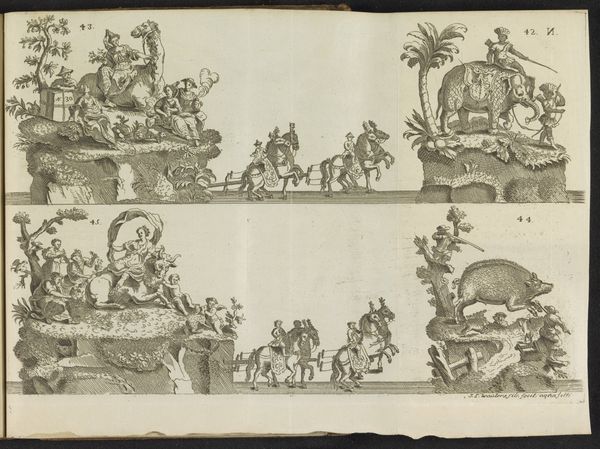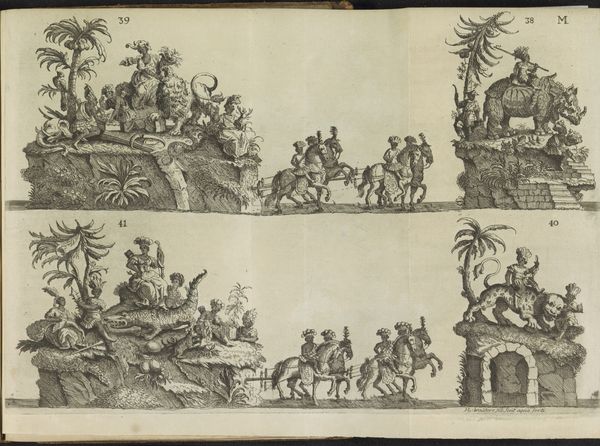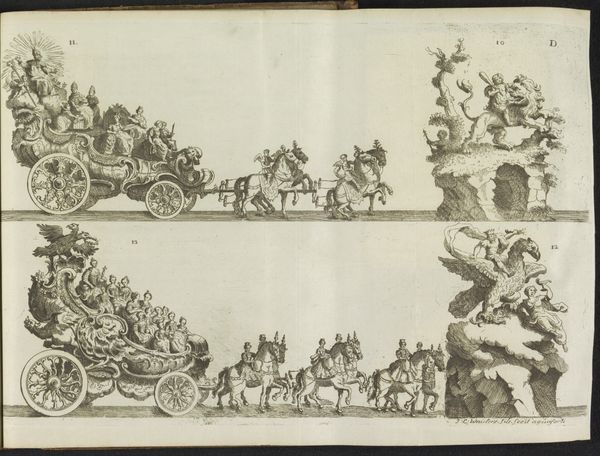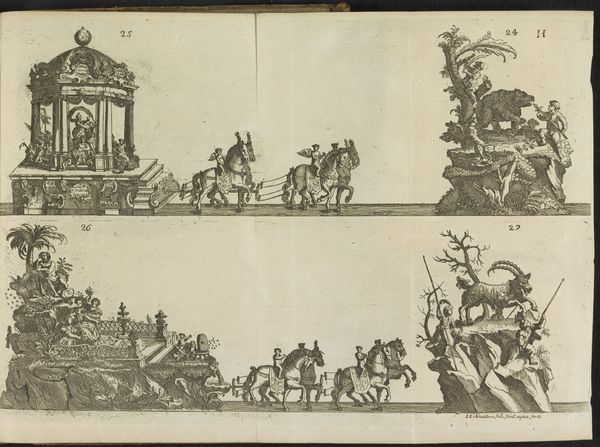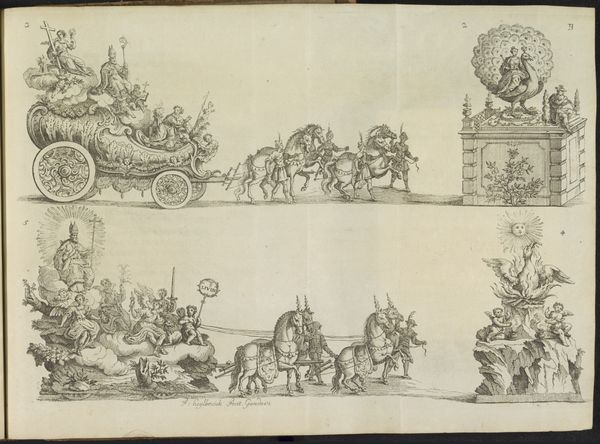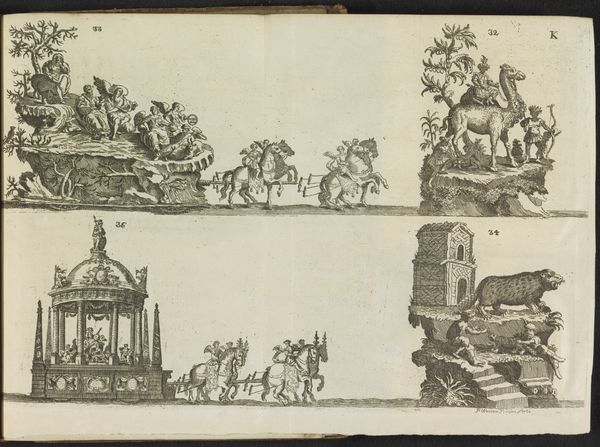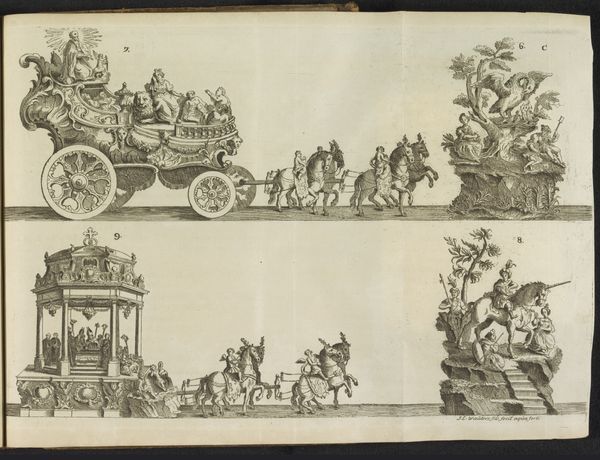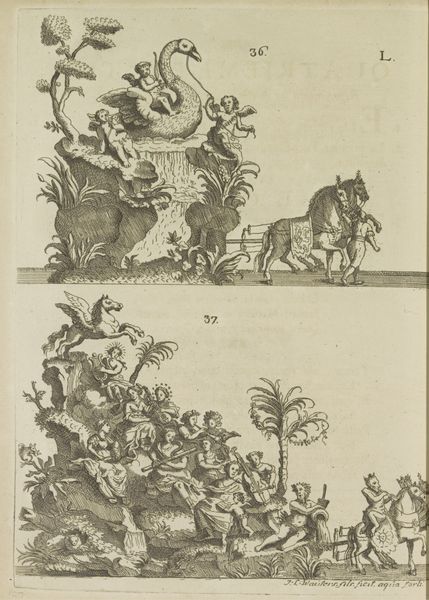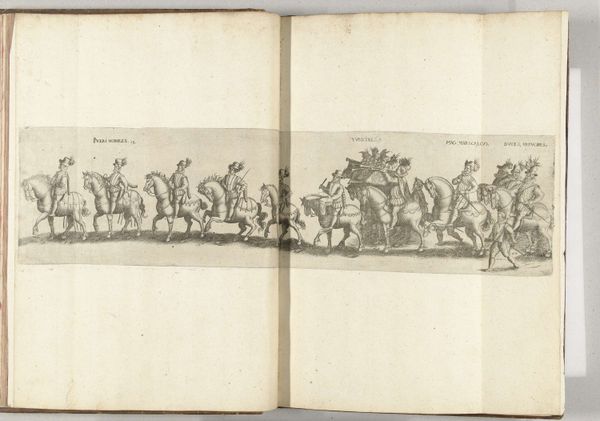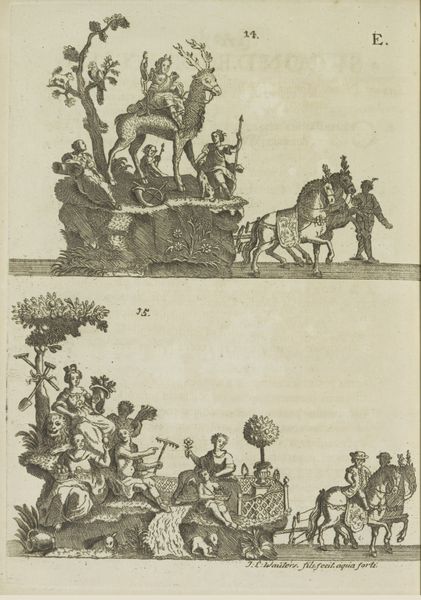
Dimensions: height 240 mm, width 370 mm
Copyright: Rijks Museum: Open Domain
Lieven Wouters created this print in 1767, depicting elaborate floats. The technique here is engraving, where an image is incised into a metal plate, which is then inked and pressed onto paper. This method allowed for the relatively easy reproduction of images, spreading ideas and styles across Europe. The image shows floats teeming with allegorical figures, exotic animals, and architectural conceits, all drawn with painstaking detail. Consider the labor involved, both in the physical construction of the floats themselves, made of wood, plaster, and fabric, and in the skilled handwork of the engraver, Wouters. Every line had to be cut precisely to create a convincing illusion of three-dimensionality and texture. These prints offer a glimpse into the spectacle and pageantry of 18th-century courtly life, but also into the vast amounts of labor and resources required to sustain it. By focusing on the material and the making, we can see how prints like this served as both documentation and promotion of a highly stratified social order. They remind us that even the most ephemeral events leave a material trace, inviting us to consider the social relations embedded within them.
Comments
No comments
Be the first to comment and join the conversation on the ultimate creative platform.
